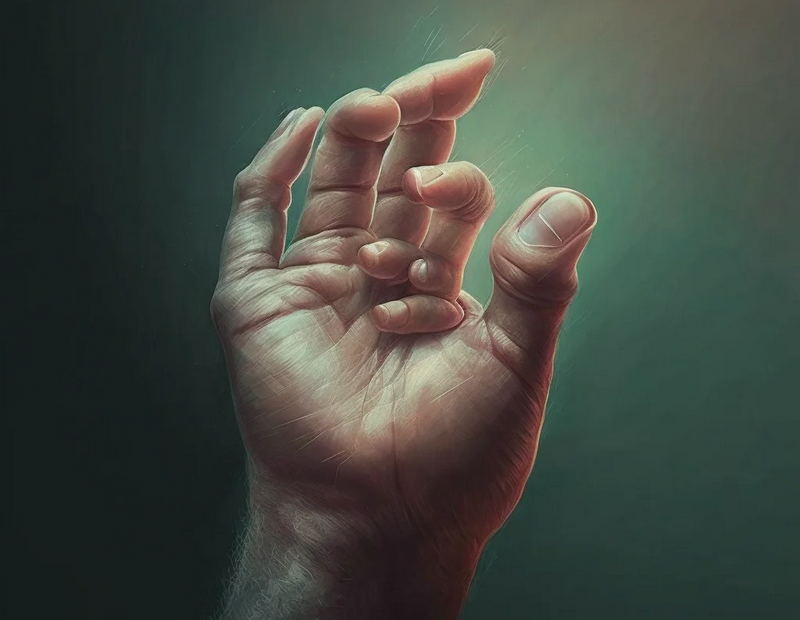Reality Checks for Lucid Dreaming

Reality checks are a powerful lucid dreaming technique that can boost your self-awareness during the day and unlock your dream world at night. When combined with other lucid dream exercises, reality checks can intensify your efforts, or they can lead to spontaneous lucid dreams by ingraining the habit of reality testing.
What Are Reality Checks?
To master lucid dreaming, you must learn to differentiate between dreams and waking reality. In most dreams, the dreamer accepts the dream as real until they wake up, realizing that something was amiss.
By incorporating reality checks into your daily routine, you train yourself to perform them within dreams, triggering your conscious mind to realize, "I'm dreaming!"
What Makes a Good Reality Check?
A reliable reality check for the unpredictable dream world demands careful consideration. The common arguments for being awake, such as sight, touch, awareness, and a general sense of existence, are insufficient since they apply equally to the dream realm. The dreamer's mind often lacks the clarity and logical thinking of the waking state.
To reliably discern when you are dreaming, you need a test that induces an "Aha!" moment of realization. It must consist of two components: a simple question and an "impossible" pre-determined action or experience.

How To Do Reality Checks
One effective reality check involves pushing two fingers from your right hand into the palm of your left hand and willing them to pass through. In your waking life, this test consistently offers resistance, while in a dream, you can often pass your fingers through your palm.
Upon this realization, your conscious awareness awakens, providing clarity about the dream environment and your pre-programmed lucid dream goals.
"Once upon a time, I dreamt I was a butterfly, flittering hither and thither, to all intents and purposes a butterfly ...suddenly I awoke... Now I do not know whether I was then a man dreaming I was a butterfly, or whether I am now a butterfly dreaming I am a man."
~ Chuang-tzu
When conducting this technique during the day, ensure that you not only perform the physical action but also ask yourself, "Am I dreaming?" and genuinely mean it. Assess your surroundings, and ponder the solidity of objects, challenging your perception./p>
Repeat your chosen reality check a minimum of a dozen times daily and make each check count. Soon, you'll find yourself asking the same question within a dream, triggering lucidity.
For instance, when I do a reality check, I might look at a cup on my desk and wonder if it really exists or am I imagining it? Can I definitely pick it up or might my fingers pass through it? If I look away and look back, is it still there?
How about the air? Can I infuse the air around me with new characteristics like warmth, color, or texture? This is how you build self-awareness, questioning your feelings and perceptions in the moment by experimenting with what's real.
Be sure to come to a well-informed decision each time about whether you're awake or dreaming. When a reality check occurs in a dream, it will jog your mind into critical thinking mode and you'll realize you're dreaming.

Top 10 Reality Checks for Lucid Dreams
While the finger and palm check is a reliable choice, you can also explore these "impossible" reality tests. You want to image the impossible actually happening, so the expectation effect works in a dream and gives up the illusion:
- Breathe - Hold your nose and mouth shut and imagine breathing.
- Jump - Imagine jumping across the room in slow motion.
- Read - Read a sentence twice and imagine it changing.
- Look- Imagine your vision gets clearer or blurrier at will.
- Hand- Imagine pushing your hand through a wall.
- Time - Look at a clock and watch the numbers morph and drift.
- Fly- Imagine flying out the window or hovering above the ground.
- Palms- Look at your palms and see your hands morph close-up.
- Mirrors - Stare into a mirror in low lighting and see your face change.
- Play - Play an instrument and hear extra sounds from nowhere.
For good measure, perform two reality checks each time. If one fails, the other acts as a backup. My go to reality check is trying to push my hand through the desk or wall. It's such a great feeling when it actually happens in a dream and I become lucid; it feels real no matter how absurd the situation.
Enhancing Your Self-Awareness
The mind constructs patterns based on real-life experiences. For instance, since you've had the experience of gravity your whole life, you don't need to repeatedly question it. You already know that you can't float or take off at will. Likewise, you know the sky is blue, you can't control objects with your mind, and walls are too solid to pass through.
However, questioning your basic experiences can promote a new way of thinking, in the waking world and in dreams. Engineers call it thinking from first principles. Psychologists call it bottom-up processing. The rule is: take nothing for granted.
Increasing your self-awareness is a fun and fast learning curve. Pay attention to your surroundings, examine them in detail, and question their nature. This approach establishes a direct path to lucid dreaming.

Troubleshooting Reality Checks
As this is a very popular lucid dreaming technique, I get a lot of questions about how to do reality checks and why they don't always work in dreams. Here are some of most common questions and answers.
How can I remember to do more reality checks each day?
Set up triggers that remind you to do reality checks, like reminders on your phone, sticky notes around the house, or draw a symbol on the back of your hand. You can also set up mental trigger points, reminding you to do a couple of reality checks every time you walk up stairs, pour a drink, or open a door.
Why aren't any reality checks appearing in my dreams?
Ensure your process is mindful and meaningful. Since your dreams relay waking experiences, the more impressionable or frequent the experience, the more likely it is to arise in a dream. Combine reality checks with other lucid dreaming techniques for synergistic effects. Keep a dream journal and record a dream every night, practice dream incubation and meditation as you fall asleep.
Why didn't my dreaming reality check make me lucid?
Ensure your waking reality checks are thoughtful and that you're not simply going through the motions. It's an easy trap to fall into when you have this same thought ten times a day. Use multiple phrasings of the question "am I dreaming?" Use your imagination to flick back and forth between what reality is showing you and what a dream could show you.
Occasionally, reality checks fail through no fault of your own. You may be having a very normal life-like dream, or even a false awakening. In fact, since lucid dreamers have many more false awakenings that non-lucid dreamers, it's a good idea to perform a couple of deep reality checks every time you wake up.
















